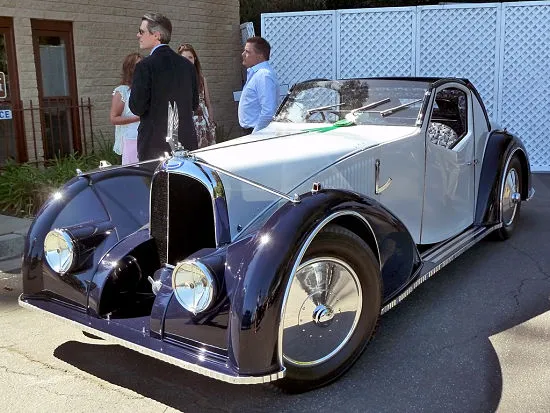Voisin Tyres

Classic Voisin Tyres
On the following pages, Longstone Classic Tyres give classic tyre fitment recommendations for Voisin cars.
If your Voisin is not listed, don't panic! Please give us a call on:
01302 711 123
or
Email: sales@longstonetyres.co.uk
Voisin History

During World War I, Gabriel Voisin was a notable aircraft producer. By the end of the conflict, he had amassed a sizable wealth and a substantial factory, but there was little demand for aeroplanes. Following WWI the name of aviation pioneer Gabriel Voisin's firm was renamed from Appareils d'Aviation, Les Freres Voisin to Avions Voisin. After the war, Voisin shifted his focus to vehicle manufacturing, citing the trauma of his more advanced planes' military usage during the war, as well as the then-emerging need for civilian aviation.
At 1919, Gabriel B. Voisin began manufacturing vehicles in Issy-les-Moulineaux, a South-West Paris industrial district, employing Knight-type sleeve valve engines. Voisin, a fine art student with a lifelong passion for all things mechanical, made considerable use of light metals, particularly aluminium, in his uncompromisingly distinctive creations.
The Laboratoire Grand Prix automobile of 1923 was one of the company's most distinctive early designs; it was one of the first cars to employ monocoque chassis construction and a tiny radiator-mounted propeller to operate the cooling pump. The distinctive Voisin style of 'rational' coachwork, which he created with colleague André Noel-Noel, emphasised lightness, central load distribution, large baggage compartments, and sharply angular features.
Voisin stuck to the sleeve-valve principle for the remainder of his car-making career. The final model Voisin was directly responsible for was the type C28 "ambassade" body design, which was influenced by the art-deco period. In the 1930s, Gabriel Voisin was unable to pay all of his draughtsmen, and a young innovative engineer named André Lefèbvre resigned after Gabriel recommended him to Louis Renault. Lefèbvre eventually joined Citroen, where he oversaw the company's three most lucrative automobile projects: the Traction Avant, the 2CV, and the DS, employing many of Gabriel's principles.

Due to poor economic conditions, the luxury vehicle market decreased in the late 1930s, and Voisin shuttered his manufacturing. During the political turbulence that followed the war, the firm was nationalised, and the government placed directors that did not uphold the previous design traditions. The Voisin firm was merged with that of its largest creditor, engine supplier Gnome & Rhône, which was nationalised in 1945 to provide the foundation for what was now the state-directed SNECMA enterprise.
At the 1950 Paris Motorcycle and Bicycle Show, Voisin displayed a "Biscooter Voisin" a voiturette designed for the tougher economic times. It featured a front-mounted 125 cc engine. The car, which was made of aluminium, featured a three-speed gearbox and not need a driver's licence to be operated. The corporation decided not to pursue the Biscooter and instead tasked Mr. Moglia with developing an alternative voiturette. Moglia's design debuted at the 1952 Paris Motor Show with the same engine, but it was relocated to the back of the miniature vehicle. The brakes and suspension systems also differed significantly. The Moglia design was introduced as the new "Biscooter Voisin" a moniker that at least one observer deemed "abusive" given the beautiful cars in its past.
